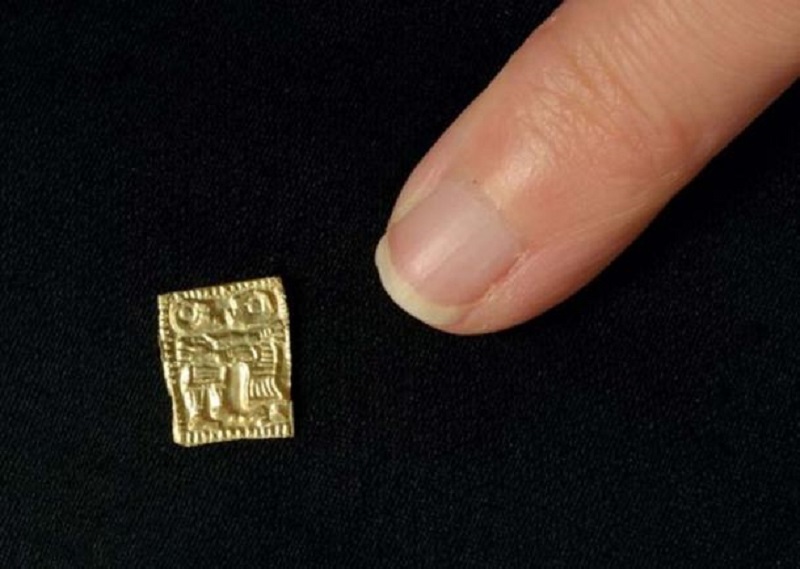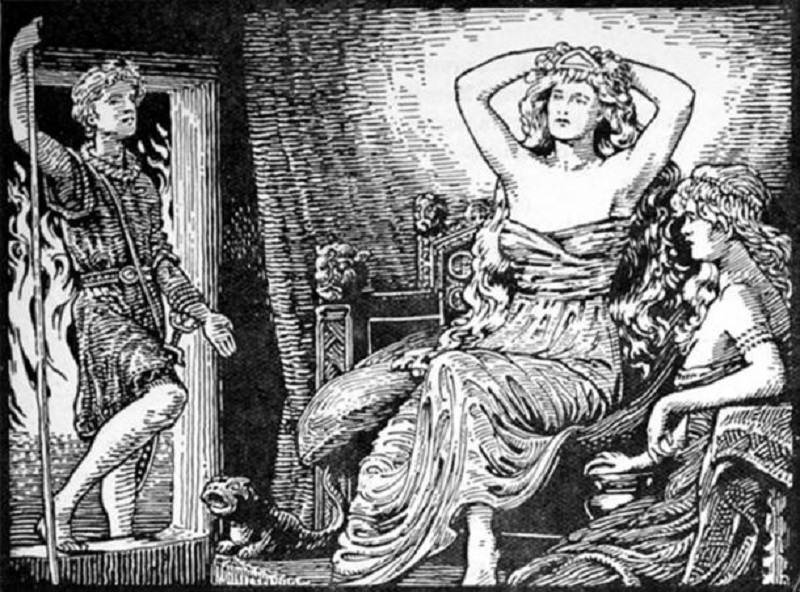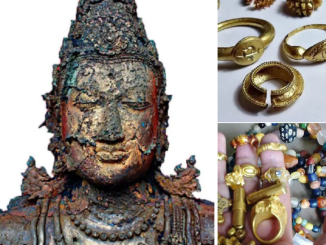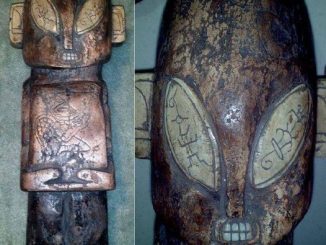In 2016, a miniature amulet made of gold was discovered at the Åker farm near Hamar in Eastern Norway – one of thousands found only in Scandinavia.
About three thousand miniature Old Norse gold amulets dating from the Merovingian and Viking periods (c. 500 – 1066 AD) have been found in Scandinavia. They show a man and a woman hugging, hugging, or looking at each other. Researchers do not know who these images depict or for what purpose they were created.
However, several different theories have been put forward.
The gold charms are extremely small in size, like the size of the little fingernail. (Photo: Vegard Vike and Jessica McGraw / Museum of Cultural History, Oslo)
Microscopic details
Stamped and cut-out amulets have a cross-section of just 8 to 10 mm and are about 0.03 mm thick or as thin as leaves.
In Scandinavia, miniature amulets were called gullgubber, meaning “little old men of gold,” because they were previously thought to depict two men. This was proven wrong and they mostly pictured a man and a woman.
The woman wears a dress and apron but there are several combinations. The man wears a coat and sometimes pants. Both sexes can wear outerwear in the form of short or long coats.
Both sexes can be pictured with items such as buckles, necklaces, drinking cups or scepters. The scepter can be in the form of a tree branch with leaves.
It seems like the gold amulets are trying to tell us a story and the stamps used must have been made by extremely skilled goldsmiths.
The details are impressive and can be best seen when zoomed in under a microscope.
Details seen on an amulet when viewed under a microscope (Photo: Museum of Cultural History, Oslo)
Found in or near special buildings
The largest discovery was made at Sorte Muld in Bornholm, Denmark, where more than 2500 gullgubbers were found.
Amulets are often found in connection with buildings commonly understood as houses of worship. It seems like the miniature images were intentionally placed there, especially around the column holes in the center of the building.
During excavations in 2005 and 2008, at what scientists believe may have been a Norse temple at Vingrom, Eastern Norway, about 30 miniature gold amulets were discovered around around one of the post holes.
The building is at least 15 meters long and is located on Hov farm (Old Norse: Hof) not far from Vingrom church. The name of the farm suggests that there may have been a house of worship located on the property.
Surprisingly, people also found many pieces of iron along with flint used as ignition tools.
The building that archaeologists believe was once a church is located not far from Vingrom church. (Photo: kirkesok.no, provided by author)
Archaeologists have concluded that this was a house of worship due to the lack of daily living items such as grinding stones, clay cooking pots, etc.
Furthermore, the building is strategically located visible from long distances at the end of Norway’s largest lake, Mjøsa.
Freyr and Gerðr
There are as many theories about who is depicted on miniature amulets and what they represent as researchers have come up with. The only thing that is certain is that these images do not have a practical function but are spiritual.
One explanation is that they are depictions in Norse mythology of the “divine wedding” between the Vanir god Freyr and the jötunn woman Gerðr.
Freyr is a god associated with masculinity and prosperity, with sunshine and fair weather. He fell in love with the jötunn girl Gerðr, who, after some coercion, eventually became his wife. However, Freyr must give up the magical sword that can fight on his own to get the woman he loves.
However, lacking the sword, Freyr was killed by jötunn Surtr during the dramatic events of Ragnarök.
Skirnir’s Message [from Freyr] to Gerd (1908) by WG Collingwood. (Public domain)
Do the miniature images symbolize the marriage between Freyr and Gerðr and their unconditional love? Are miniature gold amulets offered at weddings to show that the couple is willing to sacrifice everything, even their lives, for each other?
Another of the many theories that some researchers believe is that amulets may have been a type of entrance ticket for those deemed worthy to attend religious ceremonies.
Or do the miniature images represent something we don’t understand?
We may never get the answer to this ancient Norse mystery, and we must admit that some puzzles remain unsolved.
Top image: Miniature gold amulet (front and back) from Åker farm in Hamar, Eastern Norway: Both men and women are depicted without hair, which is unusual. (Photo: Vegard Vike and Jessica McGraw / Museum of Cultural History, Oslo)






